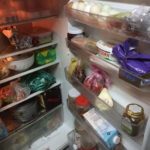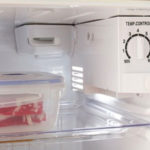Most modern households today have a refrigerator. This appliance operates 24/7, both in the winter and summer, to store and preserve food. However, due to its continuous operation, it is one of the most electricity-consuming devices.
In fact, the appliance may consume even more electricity due to the user’s usage habits. By knowing how to adjust the settings of the refrigerator, you can significantly reduce the amount of electricity used.
Inside the refrigerator, there are temperature control and airflow settings in the cool and freezer compartments. Adjusting these settings to suit your needs and weather conditions can help save electricity.

In the winter, to save energy, you should set the refrigerator temperature to a lower cooling level. With modern models, the temperature in the refrigerator can range from 1-5 or 1-6. In the summer or when you need to store a large amount of food, you can adjust the temperature to a higher or maximum level. However, in the winter, when the ambient temperature drops, you can set the temperature to levels 2-3 or even 1.
At level 1, the average temperature inside the refrigerator still fluctuates between 2-5 degrees Celsius, enough to store food while saving energy. You can do the same with the freezer compartment of the refrigerator.
Adjusting the temperature also depends on the amount of food that needs to be preserved in the refrigerator. If you need to store a large quantity of food, you can set the refrigerator temperature lower. When the refrigerator contains less food, you can raise the temperature.
In addition to adjusting the refrigerator temperature, you need to pay attention to other factors to ensure efficient operation:
– Proper placement of the refrigerator
The refrigerator needs to dissipate heat during operation, so the back and sides of the refrigerator should not be placed too close to the wall. Placing the refrigerator too close to the wall prevents heat from being able to dissipate, inadvertently causing the refrigerator to heat up, consume more energy, and also cause faster damage to the refrigerator.
In addition, placing the refrigerator next to other electronic devices such as microwaves, electric stoves, and ovens will also increase the surrounding temperature, reducing the lifespan of these devices.
– Limit prolonged opening of the refrigerator
When preparing food, you should organize and determine what you need to take out of the refrigerator beforehand, avoiding opening the refrigerator multiple times or leaving it open for too long, as this causes heat loss and increases the temperature inside the refrigerator. In such cases, the refrigerator will have to work harder to lower the temperature and consume more electricity.
Is Refrigerated Leftovers Linked to an Increased Risk of Cancer?
Dr. Lam Van Man, Head of Research, Development and Technology Transfer Department of the Institute of Safety Food, has warned of the risk of food poisoning when reheating leftovers from the refrigerator. But what should we be aware of when it comes to the possibility of these leftovers causing cancer? Here, we explore what the experts have to say on the matter and offer some tips for safe eating.






































